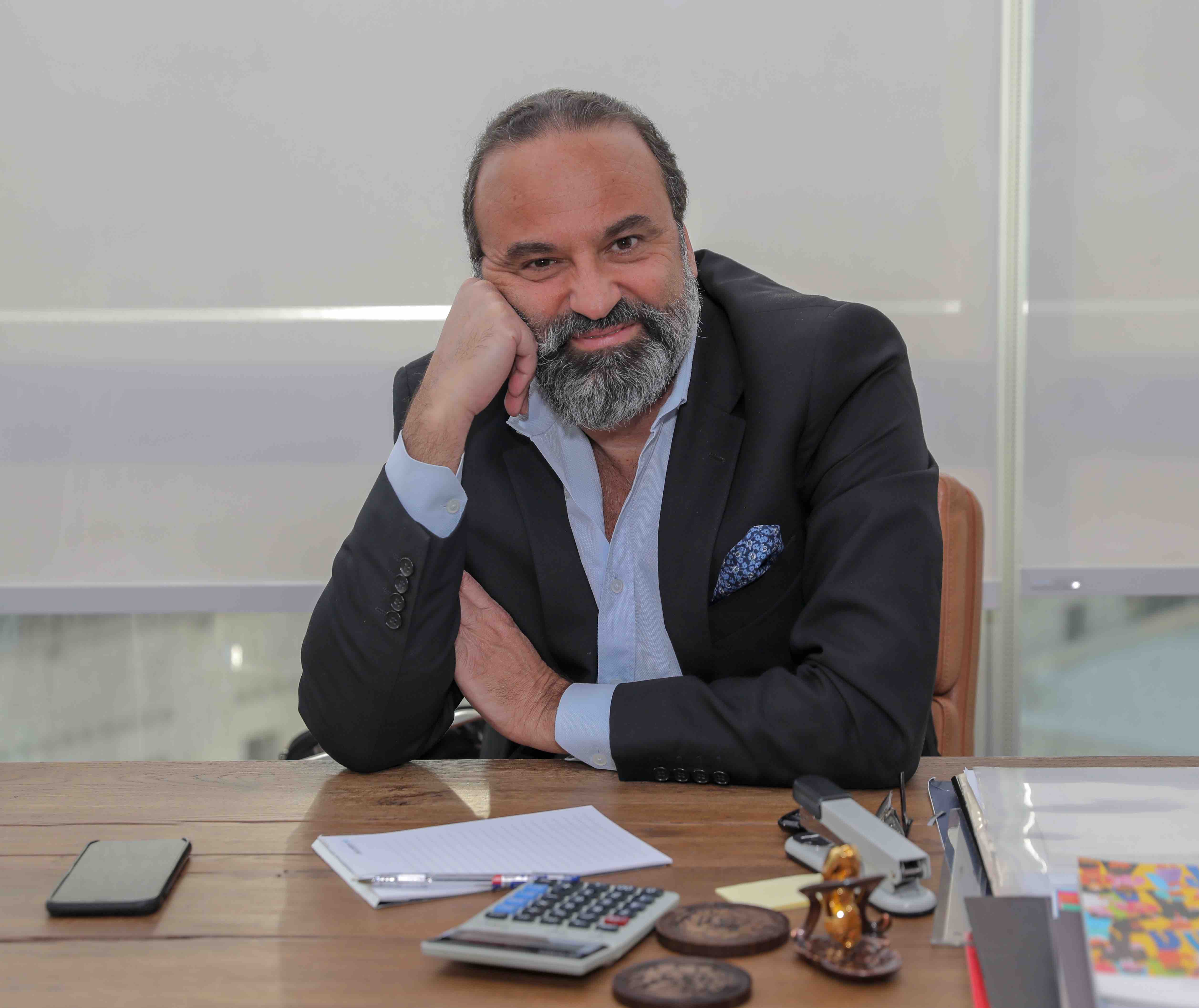News - Advertising
A kingdom in transition
by Iain Akerman
September 4, 2021

On the northwest coast of Saudi Arabia, roughly 500 kilometres north of Jeddah, lies one of the country’s most ambitious developments. Once completed, the Red Sea Project will feature 50 hotels and around 1,300 residential properties, all of which will be spread across 22 islands and six inland sites. The sheer scale of it is extraordinary. And yet it is just one of a dizzying array of initiatives that the country’s leaders hope will drive Saudi Arabia into the future.
In April, the kingdom announced a tourism master plan for AlUla (which includes the archaeological gems of Mada’in Salih and Dadan) and has set itself the goal of attracting 100 million tourists a year by 2030. It is also building Neom, a $500 billion sci-fi city on the kingdom’s Red Sea coast, and a ‘capital of entertainment’ called Qiddiya on the outskirts of Riyadh.
The kingdom’s two main cities – Jeddah and Riyadh – are planning to introduce metro systems, a new airport is being considered for the capital city, and a spirt of entrepreneurialism and innovation is being encouraged across the country. All of which forms part of the country’s ‘Vision 2030’, which seeks to create “a vibrant society, a thriving economy and an ambitious nation”, with Saudi Arabia using its considerable wealth to diversify its economy away from its reliance on oil.
Despite being pummelled by the double blow of low oil prices and the global pandemic, this re-imagining of the Saudi economy has created a mood of cautious optimism. “Since the start of Vision 2030, we’ve seen lots of momentum, hope, and high aspirations among citizens, residents and businesses alike,” says Camille Haddad, Wunderman Thompson’s chief executive for Saudi Arabia. “Wherever you go across the kingdom, you feel this energy and positivity. You see it in the booming entrepreneurial spirit, you hear it in your daily conversations, and you live it through the many initiatives that were put forward to modernise the nation and harness its previously under-tapped human energy and enthusiasm.”

“Agencies are not facing a new medium or an emerging channel, but a whole societal overhaul with new dynamics, new aspirations, unseen before challenges, heightened competition and countless opportunities.”—Camille Haddad, CEO Wunderman Thompson KSA
The International Monetary Fund (IMF) expects the country’s real GDP growth to hit 2.1 per cent this year, compared with a drop of 4.1 per cent in 2020. Non-oil growth is projected to hit 3.9 per cent in 2021, followed by 3.6 per cent in 2022, while the value of foreign direct investment increased by 20 per cent in 2020, reaching $5.49 billion – the highest full-year total since 2016. The country’s unemployment rate has also fallen, as has consumer price inflation. “These are huge numbers,” says Tony Rouhana, vice president for Saudi Arabia and the Levant at Horizon FCB. “What summarises it is the announcement of the huge spending by Crown Prince Mohammed bin Salman of $7 trillion on the Saudi economy by 2030, which exceeds what was spent in the kingdom within the past 300 years.”
This transformation is affecting every aspect of Saudi life and has caused considerable disruption (and opportunity) for the country’s advertising and media industry. Not only has it created new sectors, it has increased demand, heightened competition, and pushed agencies to significantly increase investment in their Saudi operations. “Agencies are not facing a new medium or an emerging channel, but a whole societal overhaul with new dynamics, new aspirations, unseen before challenges, heightened competition and countless opportunities,” says Haddad.

“In the coming months, we will see more multinational companies move their regional offices to Riyadh.”--Tony Rouhana, vice president for Saudi Arabia and the Levant at Horizon FCB
In an added twist, an official source stated in February that the government would stop working with foreign firms that do not base their Middle East headquarters in the kingdom from January 2024, thereby ramping up competition with the UAE. The move is part of an ongoing strategy to shift the GCC’s main business hub away from Dubai, with all agencies, institutes and funds owned by the state no longer able to contract any companies or commercial institutions unless they have a regional hub in the country. One of the objectives being to ensure that Riyadh is among the 10 largest city economies in the world by 2030. “Not far away, but in the coming months, we will see more multinational companies move their regional offices to Riyadh,” believes Rouhana. “As a matter of fact, it is worth noting that a number of foreign companies have responded favourably to the government’s decision by announcing the shift of their regional offices to the kingdom, such as PepsiCo, Schlumberger, Deloitte, and PwC.”
Will advertising and media agencies follow suit? With the Royal Commission for Riyadh City, the Royal Commission for AlUla, Neom, and other cultural commissions amongst the biggest spenders, it’s certainly plausible. What is certain, however, is that local knowledge is more important than ever, says Haddad. “Agencies are being forced to have a deeper understanding of the local culture and needs, which is pushing agencies not only to have boots on the ground but to immerse themselves in the local culture and anthropology of Saudi society,” he says. “So while some agencies are still relying on Dubai as a regional hub, many have come to the realisation that creating solid content and communication for Saudi requires being present and highly active in the Saudi market. Today and in most cases, the one-GCC-size-fits-all is no longer viable.”
Such widespread economic and institutional change has combined with sector-wide transformation to create an industry that is more vibrant and more complex than ever. The demand for local content has soared, the Saudi consumer has become multi-faceted (and expects brands to be so too), and digital communication in all its forms has risen in prominence. Saudis are some of the biggest consumers of social media on the planet and although Snapchat, Twitter and Instagram continue to enjoy widespread use, it is TikTok that has witnessed phenomenal growth over the course of the past year. As such, many younger and even older demographics are heavily consuming and creating content for the platform, with influencers taking an ever-increasing share of marketing budgets.
Haddad has witnessed three main recent trends. The first is an increase in work that is insightful and localised and celebrates what it means to be Saudi. The second is growth in the number of events and on-the-ground activations, all of which are heavily promoted. Thirdly, there has been a mushrooming of local agencies, which has led to increased market dynamism.
As a consequence, the challenges facing the industry are numerous. These include “new nuanced cultures and subcultures that were previously hidden, emerging needs and interests, a more complex communication landscape, more demanding audiences, [and the] proliferation of channels and media,” says Haddad. In addition, there is the very real threat of communication overload “as we see more brands and entities putting their weight behind communication and advertising”, while the industry has “moved from mass to personalised communication” and is “progressing into full customisation”.

“The days of conventional advertising are numbered. [...] Many agencies are still adapting old conventional work to digital specs and dressing it up as digital offering. Digital thinking is very different.”-- Marc Lawandos, MD FP7/KSA
“The days of conventional advertising are numbered,” says Marc Lawandos, managing director of FP7/KSA. “When claiming digital, it is more of an integrated digital eco-system that is data driven. Many agencies are still adapting old conventional work to digital specs and dressing it up as digital offering. Digital thinking is very different. Social and digital are driven by numbers and I do not see many agencies in KSA using data to deliver optimum solutions to clients. Agencies that can thrive in this new environment are the ones who will successfully combine creativity with data and technology. And when claiming experiential marketing, it is the whole nine yards from the conceptualisation all the way to the nuts and bolts of the complete journey.”
According to Lawandos, the industry is being impacted on two key fronts – talent and technology. “Firstly, we have seen a seismic shift in the quality of young talent who are ready to join the workforce but who would pick social media companies like Snapchat, Twitter, TikTok, Facebook and Instagram at any given day rather than building a career with an ad agency,” he says. “They consider them more attractive and hence we are losing some excellent talent entering the industry for those social media giants. The second front is technology. Let us be upfront. Social media has brought about democratisation of creativity. Browse through any social media channel and one sees amazing creativity everywhere. Today, anyone with a smartphone and enough imagination can produce good creative work. Earlier, an agency’s creativity was benchmarked against another agency. Today, an agency’s creativity is benchmarked against the unknown creative geniuses. Competing with the unknown is a real challenge for agencies.”
How can these challenges be overcome? “Creativity is the only way to survive,” replies Lawandos. “Challenging creative democratisation is through the development of integrated advertising campaigns that are strategic at heart and results focused. The way to do so is to break down conventional silos within one agency group so that a good idea is data-driven, complemented by technology, and amplified through the appropriate touch points. We need a new mindset where the focus of the whole system must be on ideas. This is how we win back the great minds that we are losing for the technology and social media companies.”
Haddad agrees. Providing fresh, bold and insightful creative while meeting consumers as they go through their daily lives is the answer to the industry’s primary challenges. “The name of the game is being open-minded, agile, relevant, and continuously introducing new capabilities,” he says, acknowledging that creativity is flourishing (see separate article) and clients are becoming bolder in response to these challenges. “But the only way to succeed in the marketplace is by attracting, nurturing and retaining Saudi talent.”
Although the influx of Saudi graduates from the kingdom’s advertising and business schools shows how far the industry has come in recent years, the demand for fresh talent remains high on both the creative and client servicing side, says Rouhana. Not only do agencies face stiff competition for talent from tech companies, as Lawandos says, but from clients, too, with “graphic designers, motion graphics and even copywriters” in high demand, says Rouhana. In many ways, however, these are the least of the industry’s concerns, with the bloody war in Yemen, the toxic international reputation of the crown prince, and the threat of a prolonged epidemic weighing heavily on the country’s economic outlook. Even the rise in foreign direct investment is far short of what’s needed to fulfil the country’s ambitious Vision 2030 goals.
Nevertheless, agencies remain largely optimistic, especially since the country’s “exemplary approach in managing the Covid-19 crisis” helped to “contain the outbreak and to demonstrate unity”, says Lawandos. The price of oil reaching $74 a barrel for the first time in years has also injected confidence and holds out the promise of increased government spending. As Haddad says: “If the situation in KSA continues with the same momentum, then the near future is promising and bright and sooner or later Saudi will be the main hub for the MENA region.”

















